- Home
- Gary Vaynerchuk
Jab, Jab, Jab, Right Hook Page 9
Jab, Jab, Jab, Right Hook Read online
Page 9
Cone Palace earned about two thousand fans as soon as they launched their Facebook page by promoting a big event and offering a 10 percent discount. But though people joined to become part of the community, they probably stayed because of the good content. Their standards are high and exacting. Before posting anything, they ask themselves, “If I saw this picture, would I share it?” If the answer is no, they don’t post. That’s an example many marketers should follow. Don’t expect your consumers’ expectations and standards to be any lower than your own.
Their posts aren’t complicated, and they only put out two kinds—photographs of their food, and text posts announcing specials and new menu items, or that use local events (including people’s birthdays), the weather, and holidays to provide context for their business. Hard-core analytical types might not trust Cone Palace’s sometimes anecdotal, unscientific methods for measuring ROI, but when they post a picture of a hamburger and fries, and fans post comments that they’re drooling and coming in for lunch, it seems safe to say that the content effectively increases sales.
And what content! Originally, staff took iPhone pictures of the food. But then they noticed that on the occasion when they had a particularly great quality photo, their engagements and interactions shot up. So they invested in a professional photographer who takes all of their food shots.
I would never have had the audacity to recommend to every business, especially a small mom-and-pop shop, that they should hire a professional photographer to take pictures of their product for social media content, because of the tremendous overhead it would represent, but secretly that’s exactly what I wish every business would do. And you know, if you’ve got the will, there is always a way. Ever heard of bartering? That’s an idea we need to take more seriously. When I think back, I could have bartered wine in exchange for professional shots of wine labels in a heartbeat if I had wanted to. If you’re a small business—a shoe salesperson, a lawyer, an electrician, or maybe a real estate agent—you can provide a service or product in exchange for another service or product that you need, like professional photographs. It would be such a worthwhile investment. A beautiful photo of your product makes all the difference in the world. Flip ahead to the picture of the apple turnover on Arby’s Pinterest board on page 128—would you rather eat there, or at Cone Palace?
There is one thing Cone Palace could have done better: When that generic photo of a banana split whizzed through people’s newsfeed, it would have been smart for consumers to see a Cone Palace logo in the bottom of the picture or at the top left. Have I beaten that horse to death yet? INCLUDE YOUR LOGO IN YOUR PICTURE!
Kudos to a business that has figured out how to innovate and evolve for a half century, and shows no signs of stopping.
REGGIE BUSH: Being Human
Let it be said straight up that if Reggie Bush were still playing for the Dolphins, instead of the Lions, there’s no way he would have made it into this book. I hate the Dolphins. But now that he’s a Lion, I can give him daps. He deserves them.
Every celebrity page should be infused with this much humanity and empathy. I love what Reggie Bush has done with his Facebook timeline, offering a terrific mix of inspirational quotes, family photos, shout-outs to people he admires (both celebrity and non), and personal reflections and anecdotes. The way he tripled down on content allows him to come across as extraordinarily human. This particular photo is not perfect—the glare covers up one of the numbers. But he’s using it properly to engage with his community, making it a perfect jab that will support any right hook he throws in the future.
A little Easter egg for any early readers of this book: Reggie Bush plays a Monday night game on December 16, 2013. If you read this before then, please mark the game on your calendar. After you watch, @reply me @garyvee with the hashtag #JJJRHreggiebush and give me your thoughts on the content that Reggie has been posting on his Facebook page. I will randomly pick three or four people who write to me and send them a replica of their favorite player’s jersey.
Questions to Ask When Creating Facebook Micro-Content
Is the text too long?
Is it provocative, entertaining, or surprising?
Is the photo striking and high-quality?
Is the logo visible?
Have we chosen the right format for the post?
Is the call to action in the right place?
Is this interesting in any way, to anyone? For real?
Are we asking too much of the person consuming the content?
ROUND 4:
LISTEN WELL on TWITTER
Launched: March 2006
As of December 2012, there were more than 100 million users in the United States, 500 million worldwide.
The Twitter concept evolved out of a brainstorming session that took place at the top of a slide on a San Francisco playground.
The company’s logo, a little blue bird, is officially named Larry, after Larry Bird, the former player for the Boston Celtics.
JetBlue was one of the first companies to start using Twitter for marketing research and customer service.
Users post 750 tweets per second.
I talk about Twitter with almost the same affection as I talk about my children. It’s had that much of an impact on my life since I started using it to reach out to customers in 2007. As an extrovert who can get to know a room full of people in just a few hours, I felt at home in Twitter’s 140-word cocktail party environment. It was the platform that came most naturally to me, because it was perfectly suited for small bursts of quick-fire conversation and idea exchanges. If the only platform I’d had at my disposal in early 2006, when I first started trying to storytell about my family business, Wine Library, had demanded long-form writing, like a magazine column or a written blog, the business would not be what it is today. Twitter’s restrictions played directly to my strengths. I owe it part of my career.
Yet discussing Twitter poses a problem for a book dedicated to improving social media content, because on this platform, and this platform alone, content often has far less value than context. How can I say that when Twitter is one of this generation’s primary sources for news and information? Because with few exceptions, like the micro-content gold that is Grumpy Cat, a brand’s success on Twitter is rarely predicated on the actual content it produces. Rather, it correlates with how much valuable context you add to the content—your own, and that produced by others.
Before I explain, it’s necessary to acknowledge that at the time of this writing, there are changes afoot at Twitter. Until now, thanks to its origins as a mobile text-messaging service, the beauty of Twitter has been its simplicity—two or three lines of text, a link, and maybe a hashtag. But in late 2012, the company bought Vine, the six-second looping video service, and innovations such as Twitter Cards now allow people to attach photos, videos, and music directly to their tweets, thus incorporating the advantages of other more visually exciting platforms like Facebook and Pinterest. These visual enhancements will pave the way for businesses to deliver content in ways that are fresh and unique to Twitter. For example, you could tweet out a puzzle piece and announce that if one thousand people retweet it, you’ll tweet another piece of the puzzle. Once all the pieces are tweeted, the puzzle would reveal where people could go to get a twenty-five-dollar gift certificate. It will be fun to explore new ways to creatively execute jabs and right hooks in such a mobile-friendly, colorful medium.
But that’s all still in the works. And I’m not even sure the Facebookification of Twitter will make that much difference to those brands that haven’t already gained traction there, because the additional bells and whistles won’t force marketers to change how they actually use the platform. Hopefully this chapter will, though.
The main mistake most marketers make is to use Twitter primarily as an extension of their blog, a place to push a link to content they have posted elsewhere. They’ll also often use it as a place to brag, especially by retweeting favorable things people say about them
, a new form of humblebragging I call a “birdiebrag.” There is a time and place for both of these types of right hooks, but not to the extent that most companies rely on them. Twitter primarily rewards people who listen and give, not those who ask and take. Much of the time, to read a Twitter feed is to read a mind-numbing number of right hooks. Yet if there has ever been a platform where engagement and community management have power, it’s this one. There’s a lot of talking and selling on Twitter, but not enough engagement, and that’s a travesty, because Twitter is the cocktail party of the Internet—a place where listening well has tremendous benefits.
SPIN YOUR STORY
If Facebook’s main currency is friendship, Twitter’s is news and information. Go on Twitter and you’ll see eighty-five people and brands at one time announcing that Brangelina is pregnant again or there’s been another tornado in Oklahoma. Anyone can present news, and on their own, your tweets about your product or service are tiny drops in the deluge of information that hits people when they come to the site. The only way to differentiate yourself and pique people’s interest is through your unique context. Breaking out on Twitter isn’t about breaking the news or spreading information—it’s about deejaying it. News has little value on its own, but the marketer who can skillfully spin, interpret, and remix it in his or her own signature style can often tell a story that is more powerful and memorable than the actual news itself.
For example, if you’re a movie theater in Minneapolis, you could tweet “Just in—a great review of Bradley Cooper’s newest movie from the Star Tribune.” This is a common way to tweet—a little content, a link to a website, and you’re done. But what if you put a little more than the bare minimum of effort into that jab? What if instead of offering the boring facts, you offered something fresh? How much more interesting would it be if you tweeted “The Star Tribune has lost its mind. This movie stinks!” and then add the link. Now that jab has some muscle behind it. Is it possible that panning something you sell will hurt sales? On Wine Library TV, I gave poor reviews to plenty of wines that were on sale in my store, and all it did was give people more reason to trust me. But if you were that worried about it, you could turn your negative review into a positive opportunity with a tweet like “The Star Tribune loves the new Bradley Cooper thriller. We think this movie stinks. Read. Watch. Debate.” You’d then link to your blog, where you would not only have a copy of the review, but information on where and when your movie club meets every month. That’s a terrific right hook. You’ve now positioned yourself as the opinionated, provocative movie theater that offers a unique film-watching experience, and that’s a story that people will be interested in following.
Today, entertainment and escapism are prized above almost anything else. Consumers want infotainment, not information. Information is cheap and plentiful; information wrapped in a story, however, is special. Brands need to storytell around their content to make it enticing, not just put it out for passive consumption like a boring platter of cubed cheese.
EXPAND YOUR UNIVERSE
Make a statement, stake out a position, establish a voice—this is how you successfully jab your Twitter followers. But what about all those people who have never heard of you? How are you jabbing them?
Other than the easy mobile experience it offers, Twitter stands in a class apart from other social media because of the open invitation it gives us to talk to the world at large. On Facebook, Tumblr, or Instagram, you have only two options if you want to meet new fans and potential customers. First, someone might find you offline through a class, a book, an ad, or a brick-and-mortar store, and decide to follow you. Second, a customer might share a piece of your content, and his or her friend might see it and become intrigued enough to follow you. Either way, you’re stuck waiting outside until that person decides to let you in. Even Facebook’s search engine, Open Graph, only allows you access to stories and conversations that have been publicly shared. Everyone else is off-limits.
Twitter users, however, have an open-door policy (except for a very limited number of private profiles)—they use the platform knowing their tweets are public. In fact, that’s the draw. People on Twitter are looking for attention; they welcome the spontaneous conversations that can ensue from a tweet. Strangers from around the world, many of whom will never meet in person, have been able to build robust online communities based on nothing more than a mutually shared interest in seahorses or wrestling. And people love how Twitter has allowed companies to enhance their customer service. If they want to get any brand’s attention, all they have to do is mention its name and they’ll get a response, because that brand is out there, using Twitter to help it communicate with its customers and build community.
Actually, that last bit is wishful thinking. Many companies are still only half-heartedly paying attention to the online conversations people have about them, thus relinquishing control over how their brand is perceived and allowing the competition to step in and shape the conversation in its favor. Fortunately, there’s a book available that offers detailed explanations of why and how Twitter can be one of a business’s most powerful customer service tools. It’s my last book, The Thank You Economy. Read it, it’s good.*
All (half) kidding aside, Twitter is a marketer’s dream come true because it allows you to initiate a relationship with your customer. It’s still the only platform where you can jump into a conversation unannounced and no one thinks you’re a stalker. Here, you don’t have to wait for anyone to give you permission to show how much you care. At any time, you can use the powerful Twitter search engine to find people who are talking about topics related to your business, even if only tangentially, and respond, adding your perspective and humor—and context—to the conversation.
It wouldn’t take much imagination for an office furniture retailer to engage with people who mention the company name, or words like work, employee, employer, office, desk, Aeron, printer, scanner, and other office-related terms. Think of all the interesting ways it could engage with people with these words on their mind, however: deadline, backache, fluorescent, happy hour, raise, promotion, weekend, swivel, or clutter.
Using Twitter Search this way helps you find storytelling opportunities with people who either already know about you, or who have expressed interest in topics related to your product or service. But what about all those consumers out there who would love you if they only knew you existed? Twitter makes it possible to reach them, too. You just have to know how to ride the cultural zeitgeist.
TRENDJACKING
In this chatty, 24-7 online culture, there is no better resource than Twitter trends for creating the real-time context as well as the up-to-date content so imperative to staying relevant. Twitter’s trend-tracking ability is one of social media’s most powerful yet underused tools. You can set your account to track worldwide, national, or even regional trends. Learning to jab with trends gives you tremendous power. You can tailor content to any situation or demographic, you can spark interest in your product or service among people outside your core group of followers, and you can scale your caring. Best of all, you can piggyback on other people’s content, giving you a reprieve from having to think up fresh creative day after day. You’ll still put out original content, but in this case, your content is the context you use to tell your story.
The night before I began writing this chapter, the television show 30 Rock aired its series finale. When I went to Twitter the next day, as I expected, there it was in the list of top-ten trending topics for the United States. It seemed to me that if consumers felt like talking about 30 Rock, marketers should be scrambling to tell their story within the context of 30 Rock, too. Could talking about a defunct television show really help you sell more candy, crowbars, or cheese puffs? It could if you’re creative enough. If you were a brand trying to ride the 30 Rock wave, the trick would be to look for the unexpected connections, not the obvious ones. Here’s one: seven. The show aired for seven years. Has your company been in business for s
even years? Do you hope to do something for seven years? Do you have seven in your company name? One brand does: 7 For All Mankind, maker of premium denim clothing—sometimes nicknamed “sevens”—often worn by Hollywood celebrities. Curious to see how the brand capitalized on the Twittersphere’s free gift to their marketing department, I decided to check out their recent tweets.
A look on the 7 For All Mankind (@7FAM) Twitter page the day after the end of 30 Rock revealed some light customer engagement—which is more than some companies manage, so kudos to them—a number of retweets sharing the nice things people have said about them or their clothing line—not so great, because that’s birdiebragging, and too many brands are doing it—and a stream of traditional right hooks, such as “Love a good leather tee,” with a link to their product page. But nowhere was there any indication that the brand had a clue about what was going on outside the world of fashion. It was a little ironic—is there any other industry that lives for trends like fashion? One of the most successful television shows of the decade just finished a seven-year run, and 7 For All Mankind didn’t even mention it. What a waste. They can talk to denim lovers every day, but on this day they had a perfect opportunity to tell their story to people who weren’t even thinking about denim, and they let it pass. More distressingly, they seem to be letting all of these opportunities go by. They didn’t just opt not to ride 30 Rock; their Twitter stream revealed that they weren’t riding any news or current events, except the ones they created themselves through sweepstakes, giveaways, and sales.
7 For All Mankind is a booming company that sells a great product or it wouldn’t have the cult following it has garnered in the decade it’s been in business. And although its Twitter profile is lacking in cultural relevance, the brand does make a serious effort to engage with its followers and stay on top of the conversation around its product. But that’s Twitter 101, à la 2008. By now they should be doing much, much more. It’s fortunate that the company is such a fashion powerhouse (which is also why I thought they could handle a little constructive criticism); if it were smaller and just starting out, a habit of ignoring all the opportunities to tell its story outside the parameters of denim or fashion could hurt it. Consumers don’t live in a fashion bubble; why should a clothing company?

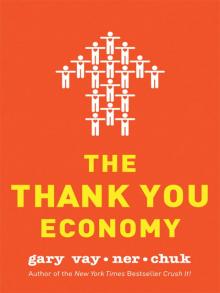 The Thank You Economy
The Thank You Economy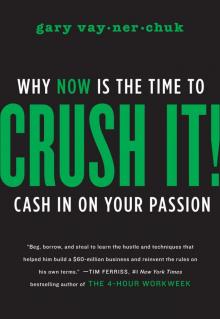 Crush It!
Crush It!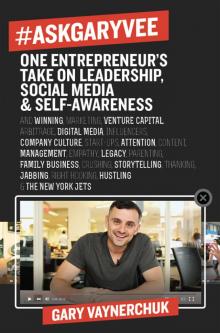 #AskGaryVee
#AskGaryVee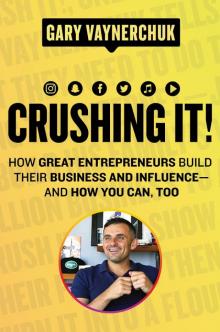 Crushing It! EPB
Crushing It! EPB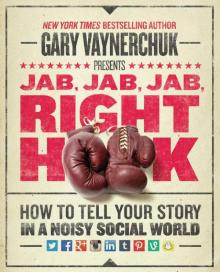 Jab, Jab, Jab, Right Hook
Jab, Jab, Jab, Right Hook